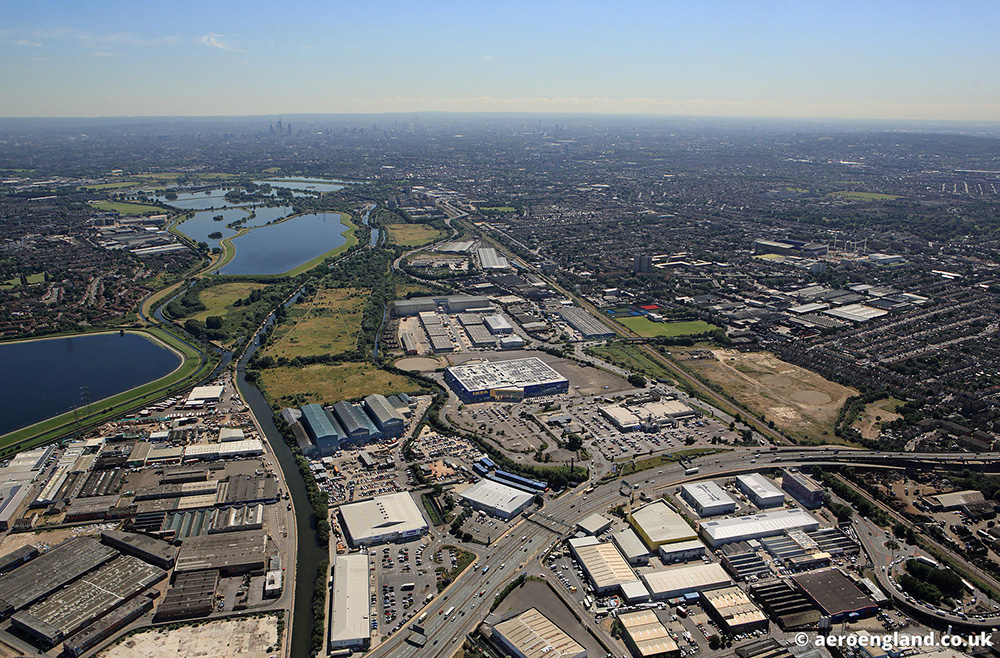As COVID-19 heaps yet more misery onto the UK’s beleaguered retail sector, it is accelerating change in the market and expanding opportunities for investors to drive value. The conversion of failing retail parks to light industrial and ‘last mile’ logistics uses is arguably among the most compelling opportunities of all.
OUT OF THE ASHES
Substantial increases in industrial values in some parts of the country have pushed struggling retail parks as an opportunity to capitalise on growing consumer demands for online fulfillment. More recently, online shopping and home delivery has provided a real lifeline amid the enforced closure of retail outlets stemming from the lockdown. Even if only some of this consumer behaviour ‘sticks’ after the crisis has passed, it will have driven significant change.

In a growing number of specific locations, most notably in London and the wider South East, industrial land values and rents are such that schemes are already becoming viable. Hence, over the past 12 months, the likes of Tritax, M7, Argo Real Estate and Prologis have each made opportunistic purchases of UK retail park assets. While many of these purchases continue to operate as retail outlets for the time being, they have the potential for conversion while offering relative value compared with industrial assets.
WHY THE SITES WORK
Using a sample of several towns in the South East, we estimate that approximately 70% of the UK retail parks are suitable, from a practical point of view, for change of use to light industrial / last mile logistics. While no site is the same, there are several reasons why retail parks are particularly suitable.
- The design of retail warehouses tends to closely resemble distribution units, with large floor to ceiling heights allowing ample space for storage. Such buildings can be adapted relatively easily and without onerous cost.
- Former customer car parking can be modified to yardage, allowing ample turning space for delivery and fleet vehicles. These sites also typically enjoy good access to urban road networks, facilitating efficient last mile distribution.
- While retail warehousing typically falls under the A1 ‘Shops’ Use Class, in many cases these premises are located within Preferred Industrial Locations (PILS). Consequently, change of use to industrial should be straight-forward compared with residential, as employment is retained on the site.
- Where change of use issues do arise, for example if retail park sites are designated as ‘retail frontage’ on Policy Maps, local authorities are nonetheless now minded to refocus retail activity back into town centres to encourage sustainability and urban vitality (see National Planning Policy Framework, Chapter 7: Ensuring the Vitality of Town Centres).
A TYPLOGY OF REPURPOSING
LSH’s Planning, Development and Regeneration team has a wealth of experience in appraising sites for their potential to accommodate different uses and / or higher density development. With specific regard to retail parks, there are essentially two approaches to their repurposing:
Reconfiguration: Former retail warehouse buildings can be reconfigured into light industrial and storage / distribution use. As the buildings are pre-existing, this approach is the least capital intensive. That said, given their visibility to the wider public, existing buildings need to be of sufficient quality to appeal to the well-known ‘brands’ in the online retail and parcel delivery sector.

EDMONTON RAVENSIDE RETAIL PARK, NORTH LONDON
One current example is Toybox, a former Toys R Us unit in Croydon. The proposed scheme, which is currently under offer, involves an extensive refurbishment of the unit to grade A specification, including parking provision for eight HGVs and 80 car/vans and fully fitted office space.
A larger example of reconfiguration is underway at Ravenside Retail Park, Edmonton. Prologis purchased the asset for £51.4m in early 2020, and is currently marketing the former Mothercare premises on the site as a refurbished and reconfigured unit for last mile use. Over time, other units on the site will be transitioned from retail when the opportunity arises.
Co-location and intensification: In some cases, redevelopment to accommodate both light industrial and residential uses on the same site is the optimal solution. While planning policies now actively support co-locating industrial with residential and other commercial uses, careful scheme design is absolutely crucial in order for it to appeal to different end users and retain long-term investment value.
Access and noise issues are often top of the agenda and must be dealt with adequately. Despite these concerns, automation and advancement of sustainable technologies such as electric delivery fleets is enhancing prospects for industrial and residential uses to co-exist.
While not involving former retail park space, there are a number co-location or ‘beds and sheds’ schemes coming forward across London. For example, In Hayes, West London, Segro and Barratt Homes are bringing forward a combined residential and industrial while, on a smaller scale, Access Self Storage has begun construction of its combined storage and residential scheme on London Road, Streatham.
SEIZE THE OPPORTUNITY
While the repurposing of retail parks towards industrial uses may only be in its infancy, the disruption and change to the property market wrought by COVID-19 is driving enormous opportunity for investors. However, each site comes with its own set of challenges and there is no one-size-fits-all approach to optimising reconfiguration.
Provided planning authorities prioritise employment uses at these sites, ailing retail parks have the potential to restore much-needed light industrial uses into urban areas and can be utilised to meet the growing needs of last mile distribution.
However, with every site carrying its own unique set of challenges and opportunities over change of use, a detailed understanding of the site’s location, local market dynamics and the planning policy context is absolutely essential. Amid great challenges at the current time, LSH’s combined experience and expertise can assist with both the identification and optimisation of these opportunities.
Get in touch


Email me direct
To:
REGISTER FOR UPDATES
Get the latest insight, event invites and commercial properties by email







